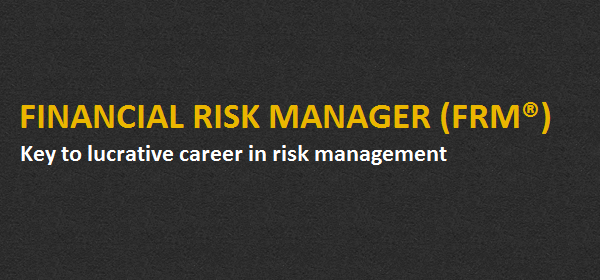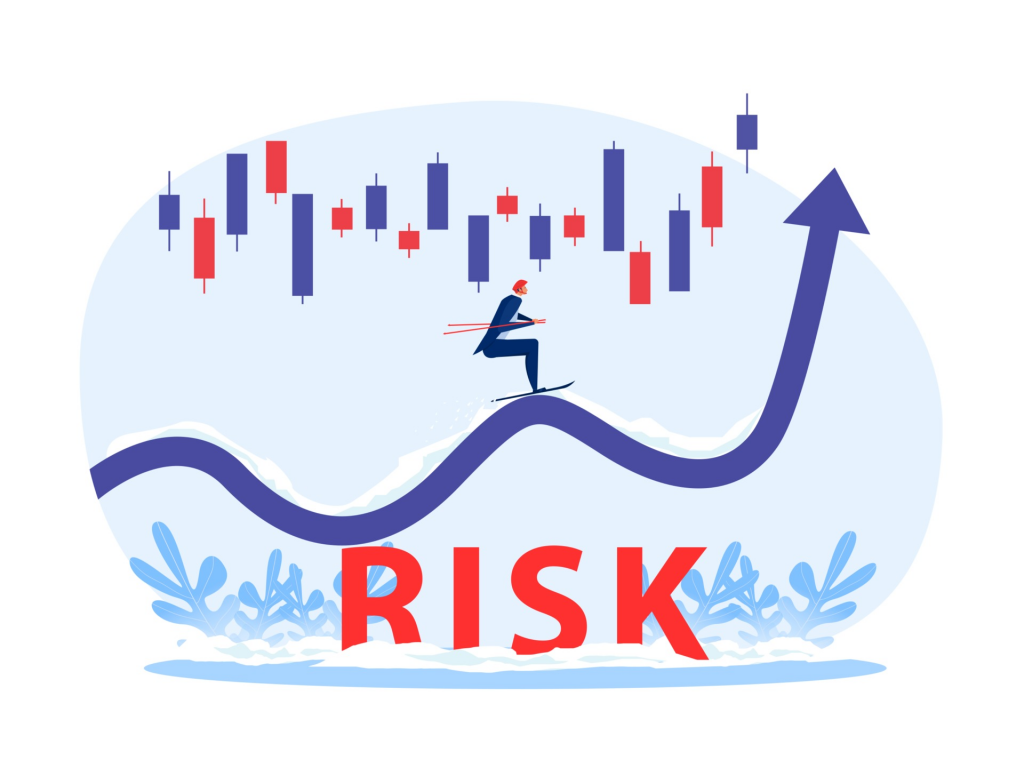Disclosure: Privacy Australia is community-supported. We may earn a commission when you buy a VPN through one of our links. Learn more.
Best Stock Trading Courses & Certifications Online (AU, in 2024)

There are two sides to the stock trading coin. The first is its simplicity. This is the side you see most often, and the side people advertise most often, whether intentionally or not.
When it comes down to it, buying stocks is quite a simple thing to do. You buy it when it is at its lowest, then you watch the funny number go up. Once it is at its highest, you sell the stock.
But even knowing nothing about trading stocks, you can probably see that there are some holes in that logic. How do you know when it is the lowest it will go?
If you do not have a method of predicting how low a price will go, then you have no way of knowing if you are getting the best price for the stock.
How do you measure the value of a stock? What do you look at to determine where it is going? When should you sell, and when should you hold a stock for dear life?
By the time you ask these questions, you have already crossed over to the other side of the coin: The complex side of learning stock trading.
Whatever your motivation – in this guide, we cover the best online stock trading courses & certifications, so you are more aware of the direction of your finances.
Table of Contents:
- Our Best Pick of Stock Trading Courses & Certifications Online
- Top Courses for Stock Trading – AU Reviews
- Top Certifications for Stock Trading – AU Reviews
- What Should You Look for in a Stock Trading Class
- Best Stock Trading Course – Guide
- FAQs
Our Best Pick of Stock Trading Courses & Certifications Online 🚌
Regardless of whether Omicron sped up a recession in Australia, moving too quickly with stocks is a recipe for disaster.
Common figures you’ll hear for forex traders and stock traders are that 90% don’t make a profit. This climbs up to as high as 97% for forex, depending on who you speak to. So when crunching your Trading Data, be consistent. Take it a day at a time. And practice deeply.
One moment, Netflix is a giant because more people are at home during the 2020 pandemic. Next, the streaming service is crashing in value. And the same boom occurred with Twitter, thanks to Elon’s takeover attempt – with nobody knowing what would come in the future.
But how can you join the golden 10%? The answer this to find a top-performing stock trading course and to do the following:
- 📖 Accept the pain of learning new skills. Elite performers like Michael Jordan learn to love this discomfort.
- 📖 Recognise that new habits take a least one month to begin to form.
- 📖 The only way to top the class is to practice more. So grab a demo account today.
Top Courses for Stock Trading – AU Reviews 📘
You have realised that stock trading is not as easy as buying low and selling high. Maybe this occurred to you early, before you even put money into an account.
Maybe you realised it only after you bought a stock. You might even have already lost money by the time you are reading this. But that is okay.
Lots of people have been humbled by the dizzying complexity of the stock market. But one of the great things about the stock market is that it is always working for you.
When stocks are rising in value, you are making money by selling them. When they are falling in value, they are becoming easier to buy.
The other great thing about it is that it is full of people willing to help you learn. This makes sense; after all, since the market is always doing something good for you, it actually profits people to get other people interested in it. In the stock market, everyone works together, but not for each other.
This is why stock trading classes exist. From stock trading classes you can learn about the various tools used to predict the movement of stocks on a technical level, which essentially boils down to reading the short-term trends of the stocks.
But you can also learn to read them on a fundamental level, analysing them within the context of their industry and the world at large to see who wins and loses over time.
We have collected the best online stock trading classes for 2024 here.
| Providers | Best For |
|---|---|
| 1. Udemy | Best for New Traders |
| 2. Bear Bull Traders | Best Stock Trading Class |
| 3. Warrior Trading | Best Day Trading Classes |
| 4. Investors Underground | Best Free Tools |
| 5. Bulls on Wall Street | Best Live Training |
| 6. Benzinga | Best Low-Cost Option |
| 7. TD Ameritrade | Best Free Stock Trading Course |
1. Udemy – Best for New Traders
Udemy is an online school that offers a huge plethora of different educational topics. From graphic design to coding, to painting, to public speaking, there are a few skills it does not teach.
Which of course means that it teaches stock trading. These classes are not like your usual stock trading classes though. Rather than costing a single subscription, Udemy offers its classes as individual, on-demand training courses. This reflects its business model across the whole site.

To understand what that means, consider this: Just about every stock trading course on the internet has a subscription. They also generally do their courses live at the very least, if not in person if they can get away with it. Both of these traits have been normal for stock trading classes since at least the 1970s.
But Udemy works differently. Because Udemy started on the internet as a place for buying graphic design tutorials, it has always offered its classes as low-price, individualised solutions to problems.
This makes them great for new traders who have specific questions that need in-depth answers. It also appeals to newer traders for its lower price point, though in an interesting twist, Udemy actually does have a subscription service as well. It is only open for businesses, but it gives access to tons of tutorials.
Drawbacks 👎️
Like many services, Udemy’s strength and its greatest weakness are basically the same thing. We mentioned earlier that there are two ways of learning how stock trading works: They basically boil down to focused learning on one hand, and broad learning on the other. Udemy only does focused learning.
There are no weekly seminars or longer-term courses you can take. Everything in Udemy is focused on getting as many results as fast as possible. There is an obvious appeal in this, but the issue is that not every problem and nuance in the stock market can be addressed in a one-hour tutorial.
The thing you are missing out on the most through this method of teaching is frequent updates on the trends of the stock market. You also will not have as much contact with your teachers, and you will have basically no contact with the rest of the community around Udemy, at least through Udemy itself.
In short, Udemy can solve certain problems very well. And not only that, but it also solves them in an economical manner. Just be ready to learn the difference between a problem that Udemy can solve, and a problem that is not included in its (admittedly massive) course material.
Pros
- Huge number of tutorials that are highly focused
- Low priced and easy to access
- No subscription fee to tie you down
Cons
- No longer-term lessons or community
2. Bear Bull Traders – Best Stock Trading Course
There are two ways to take an online stock trading class: The first is that you can take a high-impact course that is meant to get you a specific certification or teach you a specific topic.
That is one way. This method appeals to people who want to dial in their focus on one subject at a time.

But stock trading, especially these days, does not require certifications as much as it used to. Most people looking to take stock trading classes are doing so not to get deep knowledge but to simply understand what the stock trade essentially contains. Then, they can practice that themselves.
To do that, you need the second method of learning stock trading online by regularly attending seminars and Q and As by industry analysts and professionals. These are great because they are focused as much on the specifics of what is going on in the industry from week to week as they are on theory.
Bear Bull traders offer you both methods of teaching and learning. They offer a huge staff of analysts with years of experience and diverse stock trading portfolios to prove their skills. Their classes range from the most focused lessons and exercises to just casual meetups.
Both of these are equally important, as you never know what insight someone is going to give you in a setting that is not strictly professional. And of course, in between casual and high-intensity, there are the classes that just talk about what is going on in the world, from industries to individual companies.
Drawback 👎️
Bear Bull Traders’ biggest problem is their community. It is not like it is toxic, nor is it small. The problem is that Bear Bull Traders themselves do not do a lot to bring their community together.
Sure, they offer meetups, which is a pretty unique way of organising a community that is mostly online. But they do not have forums, and while you can message other members of the community you will rarely have cause to use this feature without any other method of interacting with them.
In short, Bear Bull Traders’ best community feature is only going to work for you if you live in a city where a meetup is happening. Online meetups are also possible, but just not the same.
Their pricing is a little funny as well. They start at $99 a month, with a better package for $199 a month. But then their premium plan is $1,199 a year for the first year and $2,399 a year after that. This is a steep cost and a strange way of doing pricing that will turn a lot of people off.
But altogether, it is a great place for both beginners who want to see what is out there, as well as veterans who are looking for constant updates as to what is happening in the market.
Pros
- Wide variety of different teaching methods available
- Meetups that allow you to get to know other traders
- Teachers are industry professionals with a history of good trades
Cons
- A little pricey and not a lot of community support
3. Warrior Trading – Best Day Trading Courses
There are a variety of different kinds of trading. You have your growth trading for people who are trying to grow their money faster than the rate of the economy’s growth.
You have your retirement trading, for people who are trying to set up retirement funds for themselves using the stock market.

But more popular than any and all other forms of trading combined is day trading. Day trading is defined by buying and selling your stocks on the same day. This trading is focused on getting a steady, stable income. This is what people like about it, as day trading properly can become a salary.
Warrior Trading is the best online stock trading class for day trading. Most of its resources are focused on the different aspects of tracking the value of stock throughout the day. It might sound like a limited topic, but when you consider how many factors can influence a stock, from what the news is that day, to the way your trading platform updates stock prices, you realise just how much is going on there.
These lessons go beyond individual tutorials, however. They have strategies for investing, guides on the different platforms and terms, as well as trackers of stocks that tend to produce better yields.
The best thing about all of these lessons? Many of them are free. All of the articles that you see on the site are free, while the longer-term classes are what cost a subscription fee. This setup means that you get an idea of Warrior Trading’s expertise long before you commit money to their resources.
Drawbacks 👎️
Many stock trading classes have obvious flaws. Bad pricing. Bad teachers. Limits on what you can use or how their tools apply to you. Warrior Trading is vast and highly applicable. The problem is that it lies to you. Not in big, dramatic ways. Plenty of the advice its free articles offer is true, if only technically.
The lies that Warrior Trading tells are small and numerous, rather than big and cataclysmic. These lies come in the form of free articles. They are all attributed to the ostensive owner of the site. A day trader, a father, this man probably exists. That is quite the statement, is it not?
That is to say, the man whose face you see on the website and all its articles probably exists, but he also definitely did not write every article on the site. These articles are covered in warning signs that they are produced by a ghostwriter who did their research by Googling solutions to problems.
In short, this means that Warrior Trading has a lot to teach you, but you can probably learn it elsewhere. Since, if you are looking to be suspicious, Warrior Trading probably did anyway.
Pros
- Great pricing structure
- Tons of info on day trading techniques
- Lots of tutorials and information available for free
Cons
- Their free articles are probably ghost-written, which can make their whole site suspicious
4. Investors Underground – Best Free Tools
Let’s not get ahead of ourselves. Investors Underground is not completely free. That being said, it does have two things going for it in terms of pricing: First, it actually has a pretty reasonable subscription fee.
Second, and perhaps more importantly, while the whole class is not free, plenty of video tutorials and resources are. These include incredibly in-depth tutorials, a chat room full of active community members, and daily watch lists of stocks to buy.

The community tools that Investors Underground offers are some of the best around. They start with the chat rooms, which are sorted by both region and subject matter. If you have questions or are looking to discuss things with others, then these chat rooms will help you get connected to other people.
They also have Slack channels, Discord channels, Facebook groups, and a presence on just about every other social media site that you can only access by joining the Investors Underground community.
Of course, this is not even going into the tools you get once you subscribe to them. That is when you start to get both daily and weekly lessons. These will get you started making financial moves that will get you seeing big paydays, as they are focused on growing your account day by day.
Drawbacks 👎️
As great as their tools are, both the free ones and the ones you pay for, they have a laser focus on making money fast. This seems natural, as it is trading stocks. That is what trading stocks is all about.
And while that is true, many of Investors Undergrounds lessons will diversify from normal stock trading in ways that many beginner stock traders are not ready for. That is a problem on its own, made even worse by the fact that Investors Underground does not necessarily caution people against risk.
Many of Investors Underground’s classes and tools are geared towards trading options. They have an equal representation of stocks, and not everyone is going to consider teaching people how to trade options a problem. But options are not just a more advanced form of trading. They are also riskier.
Stocks can lose value over time, but they can also get that value back. Options have more risk than other securities because they have an expiration date. If they are worthless on that expiration date, then you have to sell them whether you made your money back or not. This can cause a lot of financial trouble.
Investors Underground does a lot to educate you on how to trade well, but it also is not the most beginner-friendly stock trading class out there. So, be sure to make use of it cautiously.
Pros
- Lots of free tools
- Reasonable pricing on its subscription
- Great community and methods for connecting that community
Cons
- Encourages risky investments
5. Bulls on Wall Street – Best Live Training
Most people go to Bulls on Wall Street for the same thing: Live training. Live training is unique from all other forms of stock trading lessons in more ways than you might think.
The first way that it is different has to do with the simple fact that “live training” is different from your usual online class.
In an online class, you have a single lecturer and a class of students. Live training rarely has more than one student to a single teacher.

This is because they are there with you, walking you through how to both choose and execute the trades that they identify for you. Or, more likely, teaching you how to identify those trades yourself (though they may teach this second).
It is easy to take the value of this for granted. They teach you how to trade. So what? Once you know how to trade, do you ever need another lesson on how to do it? This question is often asked by people who view trading as a purely mechanical action. In their mind, good trading is high volume trading.
But imagine this: You open up whatever trading program you can use best. You are doing live trading, so you have an instructor watching you. Most people imagine live trading as simply doing what the instructor tells you to do. But that is only some of the time. Other times, they just watch you.
The instructor watches you go about your normal trading day. Whether it is short or long, profitable or not, risky or risk-averse, the Bulls on Wall Street instructors will not just dictate to you. They will observe your trading behaviours and respond to the bad habits that you didn’t even know you had.
Drawbacks 👎️
Bulls on Wall Street is heavily steeped in the Wall Street culture. That means prioritising certain values: Speed, profitability, willpower, and other traits that allow you to trade faster, in higher amounts, and with bolder risks on the line. Not everyone is going to jive with this kind of culture.
Not all of their courses are live or even one on one. They offer a good number of on-demand services. They even have courses tailored to certain kinds of traders. But even there, you can see that Wall Street culture drip in. These on-demand services are lacking. These tailored courses still assume you day trade.
All in all, Bulls on Wall Street is heavily focused. They can be great for both beginners and advanced users, as they give you access to learning tools in a lot of different economic directions. But they rarely teach long-term investment strategies. This means while their appeal is deep, it is also narrow.
Pros
- Unique live trading instruction helps break bad habits
- Good community structure
- Lots of lesson plan options
Cons
- Focused on day trading in a particular way with a particular state of mind
6. Benzinga – Best Low-Cost Option
If you have been paying attention, then you might notice that many of the stock trading classes on this list are rather expensive.
These are lessons that cost more than $100 or even $200 a month in some cases. For someone just starting out, that can be pretty expensive.
What is the budget option?

Benzinga is one of the cheapest stock trading classes out there. They offer their course for a little under $50 a month. This is less than half the price of the next cheapest stock trading class out there.
But a low price is only good if it still gives you value. What does Benzinga offer you?
That is where things get interesting. A lot of low-price options design themselves to appeal to beginners. And Benzinga definitely has the tools a beginner will need. But in general, its course material is rather advanced. This starts with the fundamentals, like what different trends in stocks mean.
After teaching you what the trends are and how to spot them, however, it goes into advanced analysis really quickly. This means how to read exponential and linear projections, understanding how they can be used to predict price changes, and what they mean for the varying price of a stock at sale.
In short, Benzinga starts you off slow before sending you into the deep end. Which is not necessarily a bad thing. Their course material is as wide as it is deep, covering differing theories on how to use the data they teach you to read. They even provide watch lists for what stocks to buy week to week.
All of this adds up to a far greater volume of learning material than that which is provided by most stock trading classes that cost five times as much. So, what is the downside?
Drawbacks 👎️
The biggest issue is that Benzinga openly pulls a lot of its information from other stock trading classes. Thankfully, none of this results in a gimped or shortened class. But it does mean that some subjects and services they essentially outsource to other stock trading class providers.
Remember those live trading tutorials that Bulls on Wall Street offered? Benzinga does not have those. They do not have weekly webinars (though they do have weekly news) and they do not have strong support for their community. In short, there is a lot that you lose due to the price drop.
Of course, some of the most important things are retained. Most people do not go to a stock trading class looking for good community tools. Community tools are a plus, but the people who ignore them even when they have access to them are in the overwhelming majority, so you might not miss them.
Lacking a strong faculty of teachers and lacking the ability to learn from those teachers one on one are far bigger issues. The problem there is that some people will just have trouble learning from reading articles and watching videos all the time. They need a person’s touch, which Benzinga does not have.
Pros
- Very affordable for the field
- Offers both basic and advanced courses
- Huge variety of information
Cons
- Lacking a lot of features other platforms have
7. TD Ameritrade – Best Free Stock Trading Course
With a vast library covering a large section of the educational curriculum for learning how to trade, the interactive trading and investments library TD Ameritrade are handy for both beginners and veteran stock traders – and it’s no charge, which makes this our top pick for the best free stock trading courses.

TD Ameritrade has established itself as a brokerage over a span of decades and is also one of the most popular self-directed trading resources around. Both beginners and seasoned stock traders can benefit from dipping into TD Ameritrade’s huge library of guides, videos, lectures, and webinar content for self-learning – without memberships.
Although you will need to have a TD Ameritrade account in order to access the education portal, there’s no need to make a minimum deposit or investment. This is handy because, if you sense that you have reached a good enough standard, your trading account is already waiting and ready. TD Ameritrade doesn’t limit you to any minimum deposit before being able to begin trading.
After you log in to your account, you will automatically be able to visit the full education portal. To accompany its videos, lectures, and content, the library uses a lot of audio dictionaries, tests, and playful animations. A good deal of its courses is partnered with webcasts and calendar events, such as group mentoring with a tutor at regional TD Ameritrade buildings. Most of this can be accessed through the TDA mobile app.
Curriculum levels span across the fundamentals, including Simple Steps for a Retirement Portfolio, to high-level content, like Options for Volatility.
Pros
- Educational resource from a world-class stock broker
- Vast education portal
- Access to wide-ranging interactive content such as quizzes
Cons
- No live instruction
Top Certifications for Stock Trading – AU Reviews 📘
1. Chartered Financial Analyst (CFA)
This is probably the most popular and recognized certification related to financial markets. It is offered by an American based CFA Institute and the Chartered Financial Analyst candidate who passes this certification is awarded ‘CFA Charter‘.

This certification covers a broad range of topics related to financial markets like Stock, bonds, derivatives, interest rates etc. But the passing % is very low owing to the difficulty of the exam. As of 2014, there were only 120000 CFA Charter holders across the globe.
The top employers of CFA Charterholders globally are UBS, JP Morgan, Citigroup, Morgan Stanley, and BlackRock. CFA certification exam is conducted in 3 levels in online format. Read more about CFA curriculum and fee structure here.
2. Financial Risk Manager (FRM)
This is another internationally recognized certification exam offered by Global association of risk professionals (GARP).
This is particularly useful for individuals who want to build a career in risk management be its credit risk, market risk or liquidity risk.

FRM holders perform a broad variety of functions related to risk management within investment banks, asset management firms, as well as in corporations and government agencies.
The basic requirements for becoming certified as a Financial Risk Manager include passing scores on both the Part I and Part II exams, as well as a minimum of two years’ full-time work experience in financial risk management related positions including portfolio management, risk consulting, and other fields. Read more about FRM certification here.
3. Chartered Market Technician (CMT)
This certification will add enormous value to your profile if you want to pursue a career in Technical analysis and chart reading. This is offered by the Market Technicians Association(MTA) based out of USA. It is conducted in 3 levels and evaluates basic and advanced concepts of Technical analysis, Dow theory, chart patterns etc.

This is one of the hottest certifications offered today due to the recent boom in the field of Technical analysis. Almost every hedge fund are looking for Technical analysts in their organization.
To earn the CMT charter you must be a Member of the Market Technicians Association (MTA), successfully complete three levels of examinations and obtain approval from the MTA Admissions Committee and Board of Directors. Read more about CMT certification here.
4. Chartered Financial Technician (CFTe)
It is another Technical analysis certification similar to CMT. If you are based out of Europe or UK then probably CFTe is more recognized than CMT.

This certification is designed for self-study, with an examination at the end of levels I and II. Upon successful completion of both levels, the candidate is awarded the “CFTe” designation, which certifies that the candidate has a thorough knowledge of the field, and is able to understand and apply advanced technical analysis concepts and tools.
It is currently offered in English, German and Spanish. Arabic and Chinese will be offered at a later date. Read more about CFTe here.
What Should You Look for in a Stock Trading Course? 📊️

Now that you have seen some of the best stock trading classes out there, you might come away noticing some common trends. Oftentimes, they will have a suite of instructors that have proven themselves as wise traders with a lexicon of information to help you predict which way the market is going to go.
They will also have articles for easy reading, perhaps a community for helping you out, lessons that are both scheduled and on-demand, and regular market updates. Is there anything we are missing?
Yes. Let’s briefly go over the two most important things a stock trading class should have.
1. The Teachers Have Real Credentials
Imagine two people come up to you offering a trade. Trader #1 offers you a trade saying that he wants to give you his family heirloom stock. It is a great stock, he likes it very much, and he wants you to have it as a welcoming gift to the stock market. All it will cost you is the price of the stock.
Trader #2 offers you their stock saying that they bought it cheap. They will make money if you pay them, but more importantly, they have done their research and they can not only promise you that the stock will make you money, but they can also show you exactly why they can make that promise.
Which stock do you buy? Trader #2, obviously. Stock trading gurus will often market themselves in the manner of Trader #1: They are all about being honest, hardworking family people. They are trying to educate the world because it is the right thing to do. But you do not need an honest teacher.
You need a teacher that knows how to make money. This is a world of supply and demand. Trader #1 appeals to people by making them feel needed. Trader #2 appeals by being needed themselves. You want a teacher that has either the education or the stock trading portfolio to back up their claims.
2. The Course Actually has to do with Stocks
This might seem obvious, but lots of people end up taking whole economics courses thinking that they will come away with some insight into the stock market. This is not always the case. The stock market is oftentimes mistaken for a representative of the whole economy. This is also not the case.
An economics class will teach you how money flows through the world in theory. Learning about the stock market is about seeing where money is flowing through the world in practice.
Best Stock Trading Course – Guide ⛳
We’ll begin with the basics. This section will provide useful whirlwind data for beginners still grappling with how stock trading works, while you go about selecting the best stock trading course to practice with & learn from:
How to Trade Stocks
High-performance index funds or stock mutuals are recommended for newby stock traders. These offer a good mix of diversified shares at very low minimum deposits – most important, is to find a fund provider with a long track record for outperforming the market.
That said, the logistics of trading stocks come down to six steps:
1. Open a brokerage account
Brokerage accounts let users trade stocks – this can take a matter of a few minutes. Verification checks can take longer.

2. Set a budget
You’ll need to tweak this according to how much risk your investment can be exposed to. Most data traders, for instance, never risk more than 1% of their total balance per trade.
3. Understand orders and limit orders
Market orders buy or sell stock immediately at the best market price available. Whereas limit orders kick in only if prices hit a specific value you’ve pre-chosen – in other words, the most you are willing to pay before opening a position.
4. Practice!
Courses in this list offer stock-market simulations that let users test out methods on the market across months, to track outcomes before investing anything.
5. Track
Even professional investors struggle to outperform the market, which is why investing in a well-priced index fund or ETF (a basket of fractional shares in many different company holdings) is often the wisest beginner move.
6. Keep level-headed
Economists say, there is no such thing as a free lunch. And this is true in stock trading. The masters have spent thousands of hours understanding things, rather than trying to win the lottery by guessing at a breakout stock.
Understanding Stock Trading Risks
On that note, here are three tips on risk management:
1. Ignore the micro and focus on the macro
This all begins with deep practice over a long period of time, before any significant footing in understanding how markets and fundamental/technical components work.

So don’t skip this step – focus on figuring out if this is something you have a natural affinity for and possibly even talent for!
2. Doubt ‘hot tips’
Many news outlets and forum posters work with sponsored advertisement companies in order to do the equivalent of pump-and-dump schemes popularised by the ‘Wolf of Wall Street.’
3. Keep solid records for taxes
When using a mutual fund, directly or through an employer, there are tax benefits. This is the same with Stocks and Shares ISAS, which are completely tax-free. Keeping good records makes it easier to get tax reliefs and tax-loss harvesting.
FAQs 💹
What Stock Trading Strategies Do Beginners Use?
Other than using mutual funds, index funds or exchange-traded funds, the starting place is always with practice, without risking any money using a trading simulator.
Mutual funds naturally hedge against the risk of market volatility. Once you begin to veer into training in individual stocks, then you are leading into professional investment territory – which means I was seeking the advice of a financial adviser, or investing the time to study how stock markets work using a credible stock market trading course.
Can You Trade Stocks With $100?
Absolutely – for instance, investing in a low-cost mutual fund means there’s virtually no minimum deposit. Your money is added to a much larger pool of investors, who fund a vast portfolio spanning across many different holdings, including blue-chip companies whose cost per share is double or triple or more than $100 a piece. This is the main benefit of investing in a mutual fund.
A few brokers also let you directly purchase fractional shares, although your level of risk exposure is immediately much higher because you will be the one managing the selection of stocks.
What Makes a Successful Stock Trader?
- Deep study
- Deep practice
- Rinse and repeat
Conclusion 👀️

The world of the stock market is strange and confusing to many people. If you go in blind, you will lose all your money looking for a winning lottery ticket that does not exist.
Abraham Lincoln once said that if he had four hours to cut down a tree, he would spend the first three sharpening his axe. Stock trading classes are how you sharpen your mind to bring the money of the world to within your grasp. Then, all you have to do is take it.
You Might Also Like:




